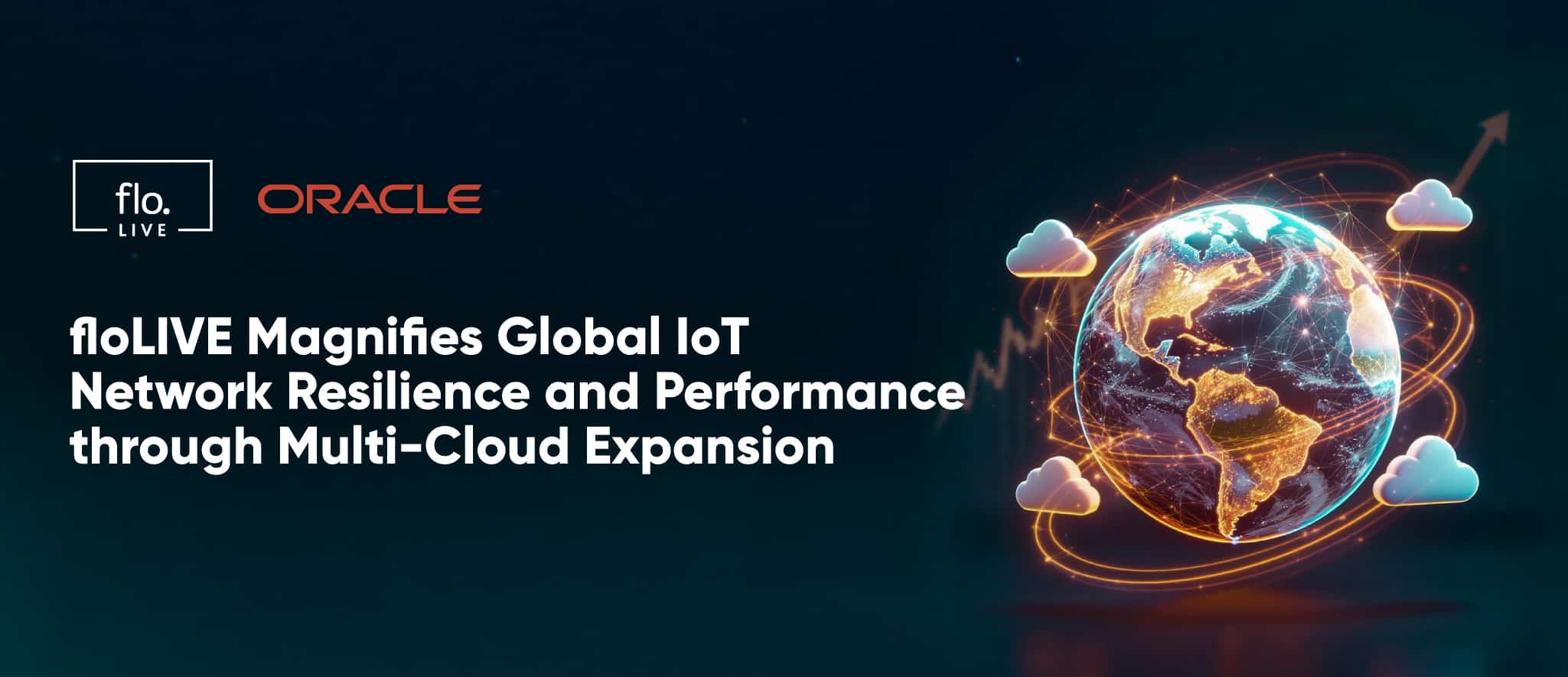Why I Left a Prestigious Role Behind & joined floLIVE
Think ahead, as little as two or three years into the future. Can you imagine a world where car manufacturers aren’t tracking KPIs remotely for their vehicles? Can you envisage a situation where shipping companies aren’t using smart monitoring to keep track of metrics such as temperature, humidity and location in real-time? In fact, can you think of any forward-thinking industry that won’t be able to address a pressing challenge with the help of IoT technology? Me neither. But it wasn’t always clear to me how we were going to get there.
From 2015-2019, I was the GM of AT&T Israel, running the entire operation with hundreds of people, as well as hundreds more in development roles in the US. My eye was always on the future, on the growth areas that would revolutionize the world that we live in.
It was obvious to me that IoT was a huge growth area, but at the same time, it was equally clear that there were a lot of challenges. I became familiar with these challenges, and I could see these issues slowing IoT adoption more broadly across the industry.
If I was going to make a career change, I wanted my new role to be at the forefront of tomorrow’s IoT-enabled world
Considering my options, I had a number of opportunities available to me in the market. IoT drew my attention, but I was particularly interested in finding an organization that already had a keen awareness of the challenges the IoT industry was facing, and preferably one that was already addressing some of them. These included:
-
Complex execution: IoT isn’t like writing down a piece of software and putting it on the cloud. IoT is a delicate orchestration of different solution layers, from the physical chip and the device itself, through to the application layer, the data layer, connectivity, and beyond. Each of these alone is complicated enough, and together there is bound to be some friction. Organizations are under-estimating the importance of ensuring that all of these elements play nicely together.
-
The need for flexibility: IoT is not the same beast as mobile. As mobile subscribers, all users pretty much behave the same way. In contrast, each use case for IoT can be totally different, from the physical device itself, down to requirements and behaviours. The flexibility of an IoT connectivity solution is paramount.
-
Seamless global connectivity: Again, unlike mobile, where roaming agreements for limited amounts of time are generally sufficient, IoT devices are built to go all over the world. They are often produced in one country and then sent to another or remain location agnostic with no such place as home. The need for global availability needs to go hand in hand with the flexibility of the solution.
-
Security and compliance: A global solution needs to have in-built knowledge of all the privacy and compliance guidelines in each country, as well as visibility into every layer of the technology stack, from the chip and device itself, through to how it communicates and interacts with on-premises servers and the cloud.
Creating an IoT solution that is flexible enough for the use case, global enough for the technology, and secure enough for the users – that’s no easy task, which leads to two more challenges.
-
Insufficient planning: With so many layers and elements to consider, planning is a step in and of itself. Some organizations forget to think about compliance and data privacy, or the security of their devices in the field for example. These challenges can be stumbled across later in the IoT journey and bring the whole project crashing down.
-
A lack of ROI: As a result of a mixture of these challenges, IoT growth has been slower than anticipated. Businesses are putting money into projects that are yet to see strong returns. This is to be expected with any maturing industry. As IoT evolves, the balance between investment and return will change, driving new IoT projects and success stories.
If you’re wondering how we’re going to make that leap happen, you’re where I was in late 2019.
A bright vision for the future
Enter floLIVE. Immediately, I saw that this company had a unique vision for the future of IoT connectivity, the expertise to solve existing challenges, and that they were passionate about enabling a strong future in the connectivity space.
But that vision and understanding of the industry was only step one for me. What really convinced me was an important asset that many companies lack. floLIVE owned almost the entire technology stack inside its solution, rather than relying on an aggregation of third-party solutions. I knew that if we wanted to serve customers in the best way, not just offering a unique solution, but one that is global, secure, flexible and compliant, we needed to have it all. The mobile core network, the connectivity management platform, the SIM technology, the BSS elements– it was all there.
Together, floLIVE had a unique vision to address what I already knew were real-life challenges in the market, alongside a vast amount of the technology to make it happen. Add to this, a strong list of investors that included 83North, Saban Ventures, Qualcomm and Dell, plus an impressive team put together by founders with a great track record for building successful technology companies, and it’s easy to see what my motivation was for jumping aboard.
Looking ahead: Predictions for the IoT industry
When I look forward a few years in the industry, I can see that organizations that don’t see IoT as a true business benefit are going to be left behind.
To get a piece of the pie, IoT connectivity solutions will need to be ready for:
-
More use cases: I see more IoT use cases coming to market, and with that – more need for connecting devices to the internet and the cloud. Speaking to various key players in the market, from chip manufacturers or device manufacturers, through to IoT service providers and mobile network operators, they all might have different goals or considerations, but the industries are all maturing, showing that while IoT might have had a slow start, it’s gearing up for a bright future.
-
More flexibility: To make this happen, floLIVE is focused on both new functionality and more flexible device management. Industries will have different needs, and whether that’s deploying on-premises, as-a-service, via a private network or a hybrid solution on the cloud or on containers, we want to be able to say yes. Our vision is to allow any company that wants to have a global IoT solution to be able to execute this successfully.
-
The emergence of 5G: We also have our focus on the emergence of 5G, which is going to be a key element of growing IoT globally, due to faster speeds and better reliability. Eventually, we hope to deliver a 5G global network, so we’re working intensely to make that happen, at the same time as supporting our existing customers.
I am so excited to be coming to floLIVE at this stage of IoT adoption, where there is a real opportunity in the market, and I have an enthusiastic team who are excited to deliver it. The people at floLIVE have built incredible technology so far that is very attuned to the industry challenges, and yet their passion for the market, and their will to succeed is far from slowing down. In fact, their motivation feels like day one – carving a critical space for floLIVE in the inevitable IoT-enabled future.
Are you currently adding IoT projects to your roadmap? Let’s connect.











